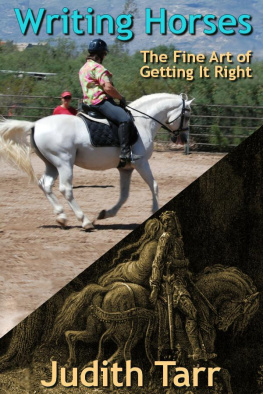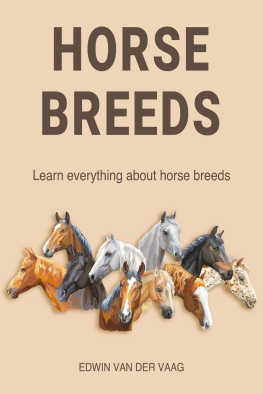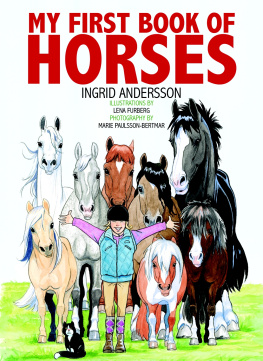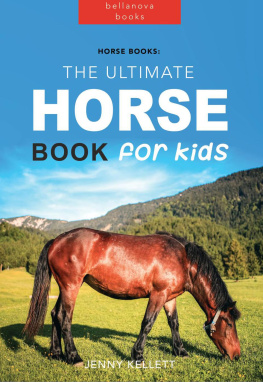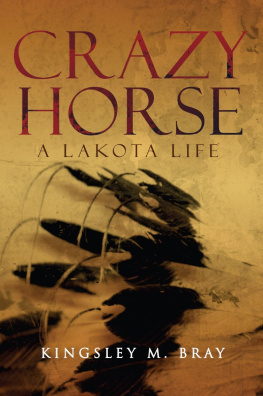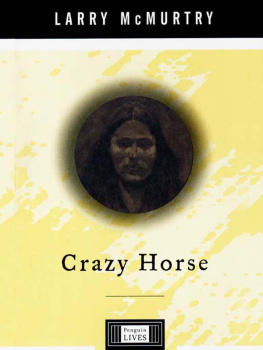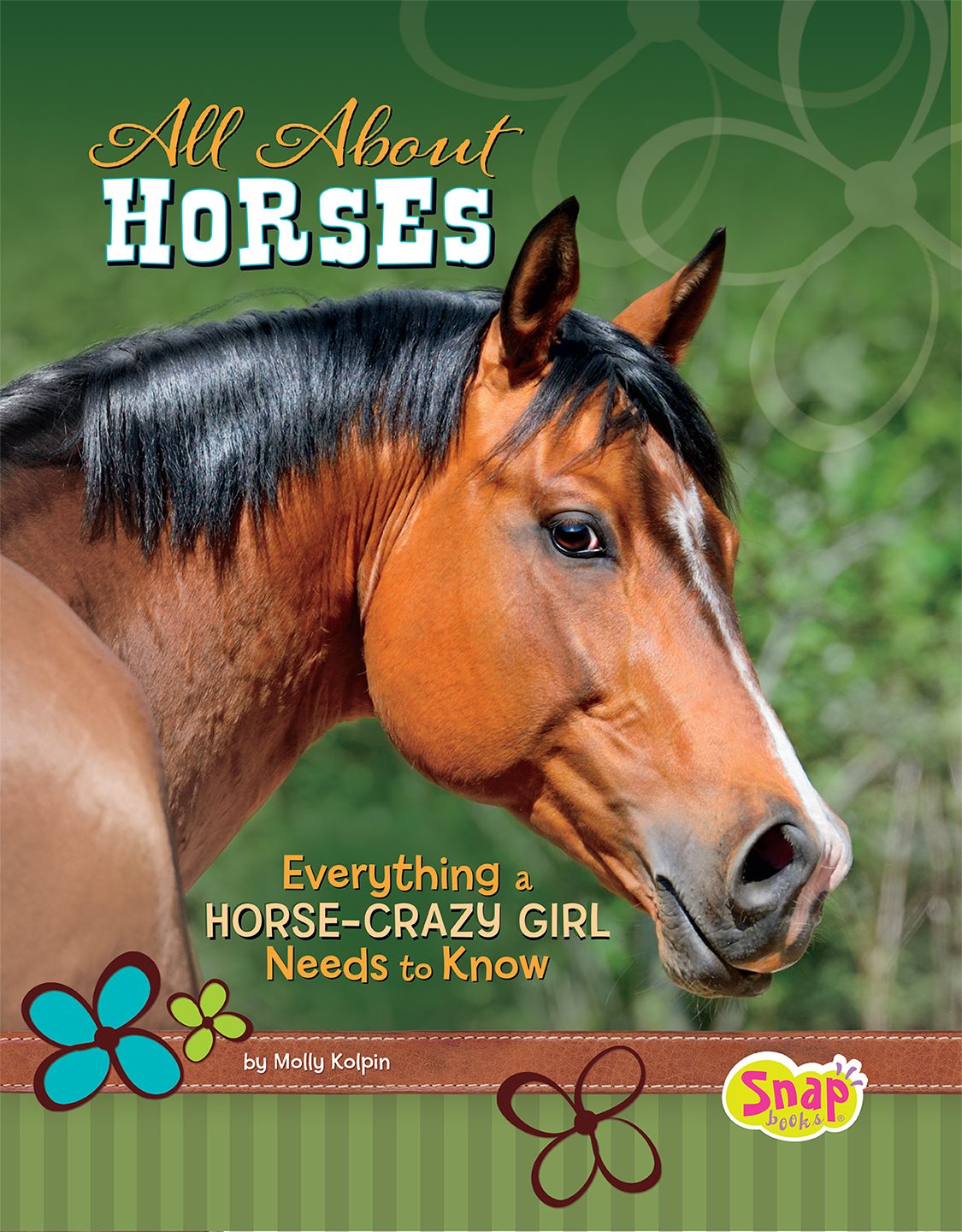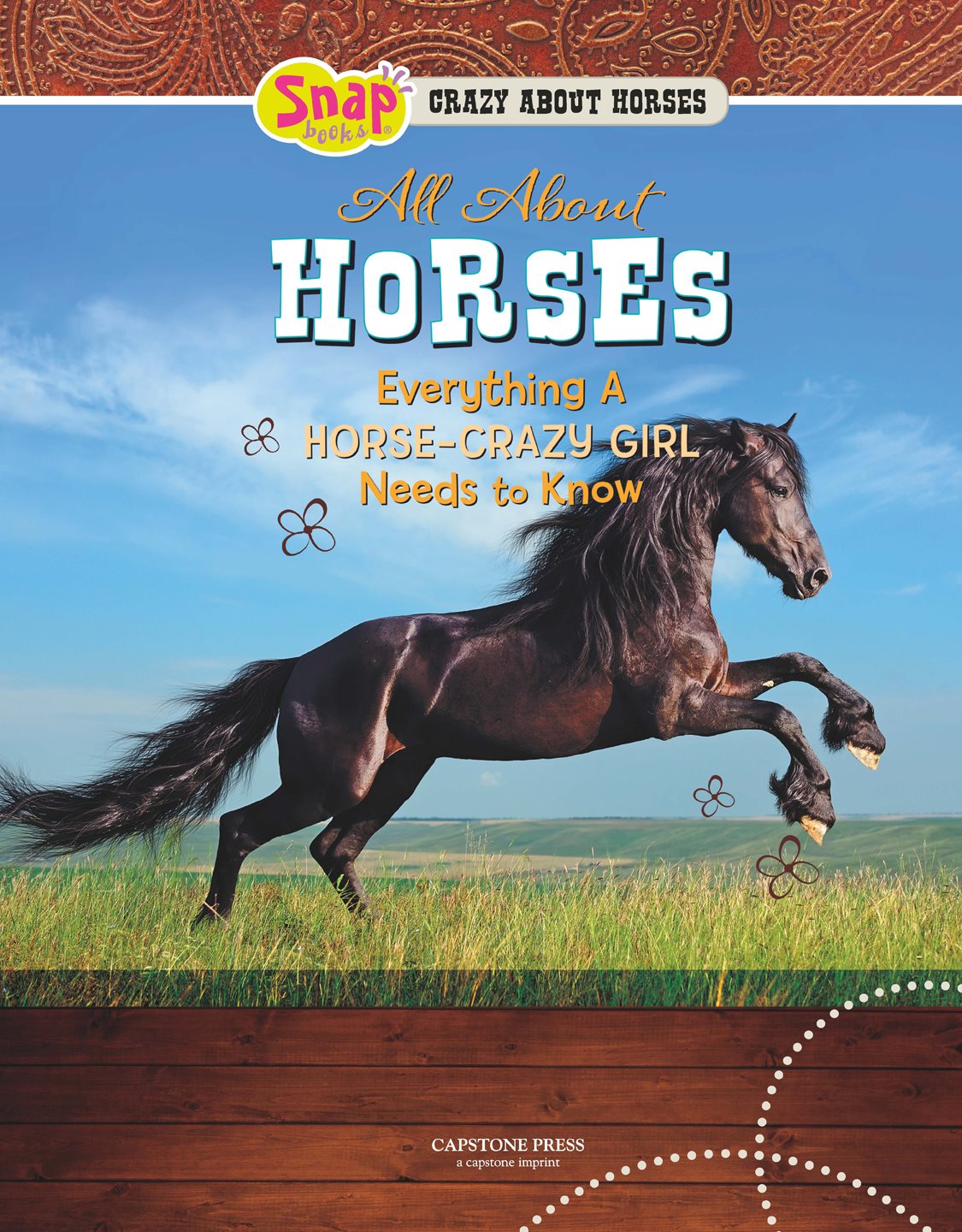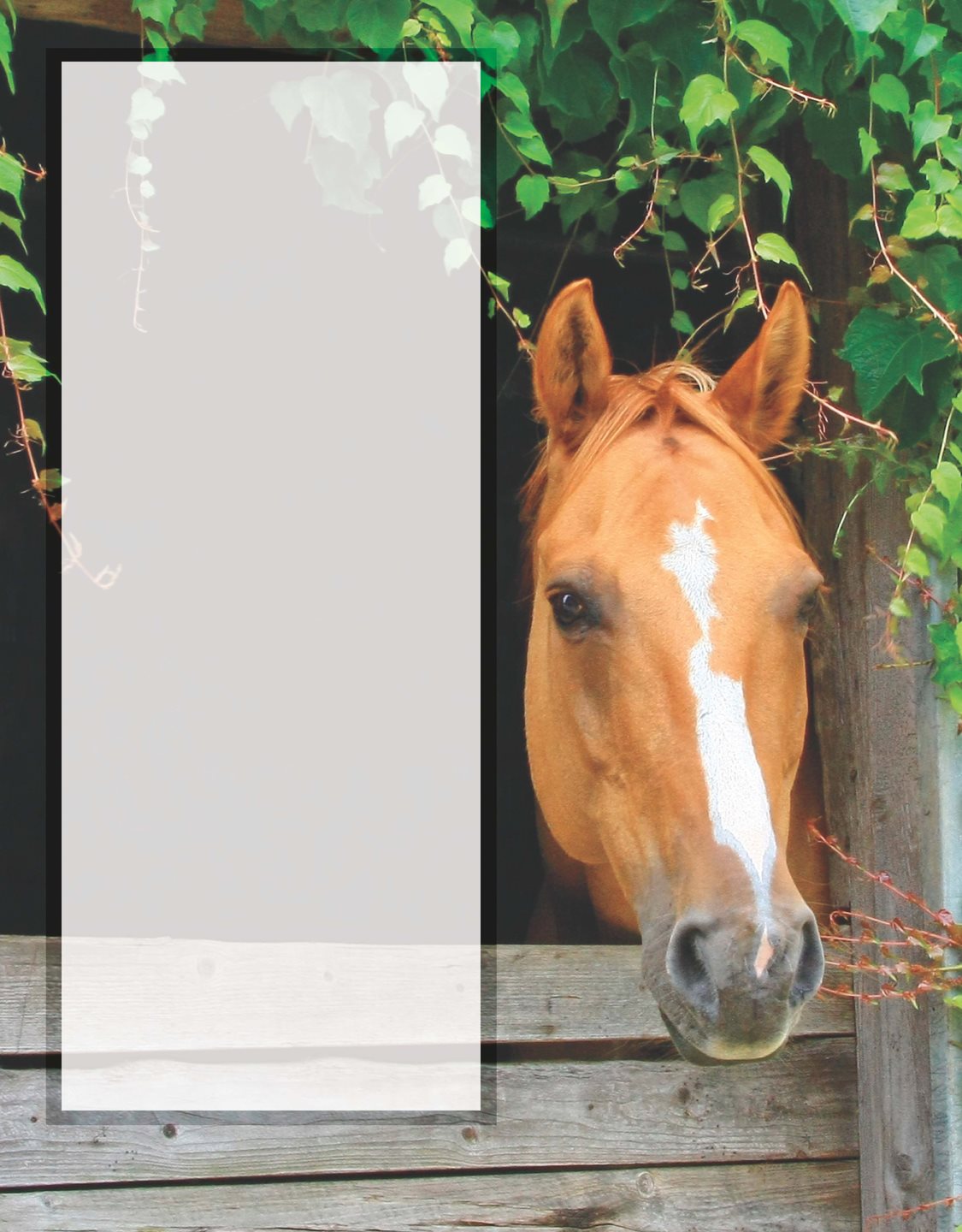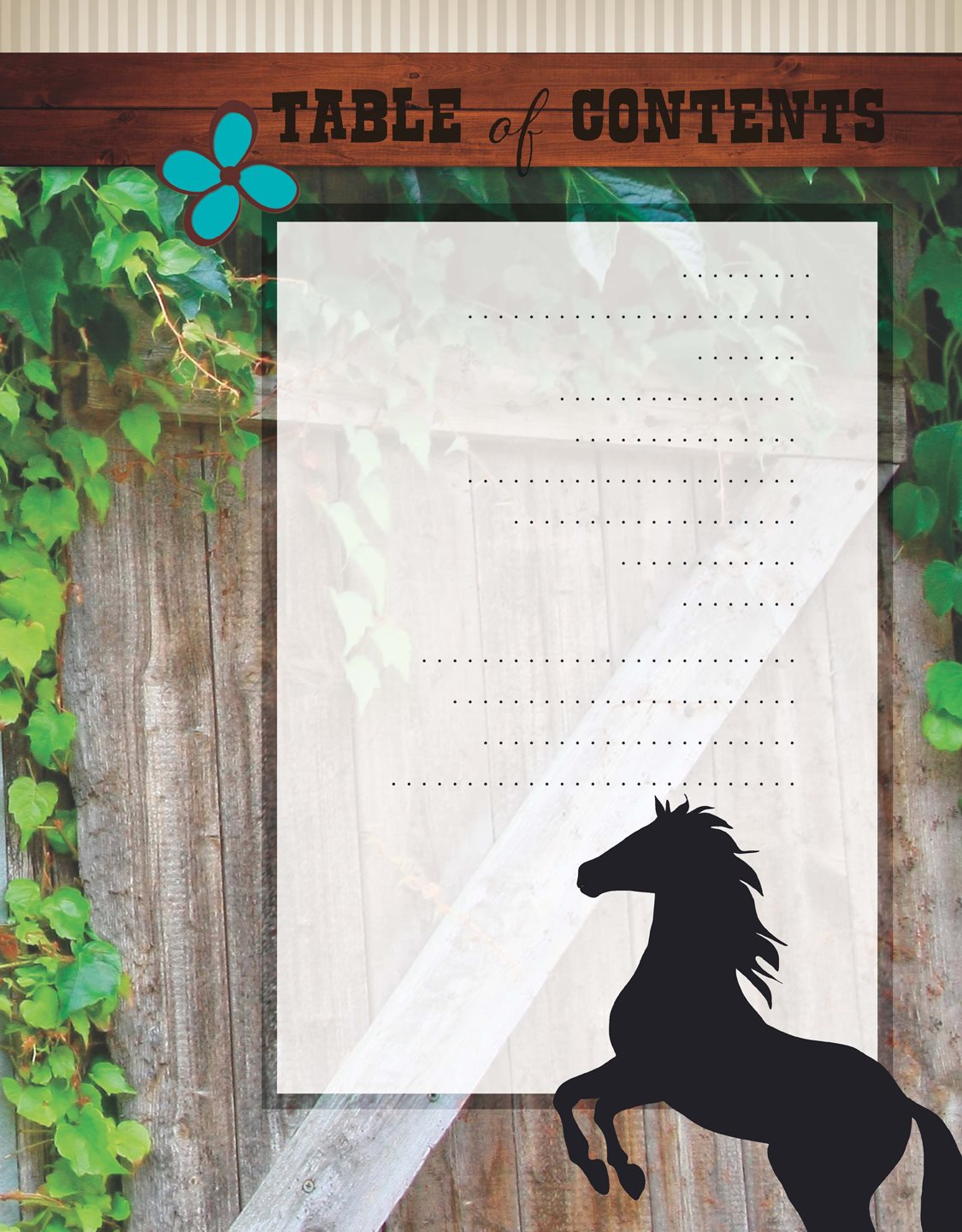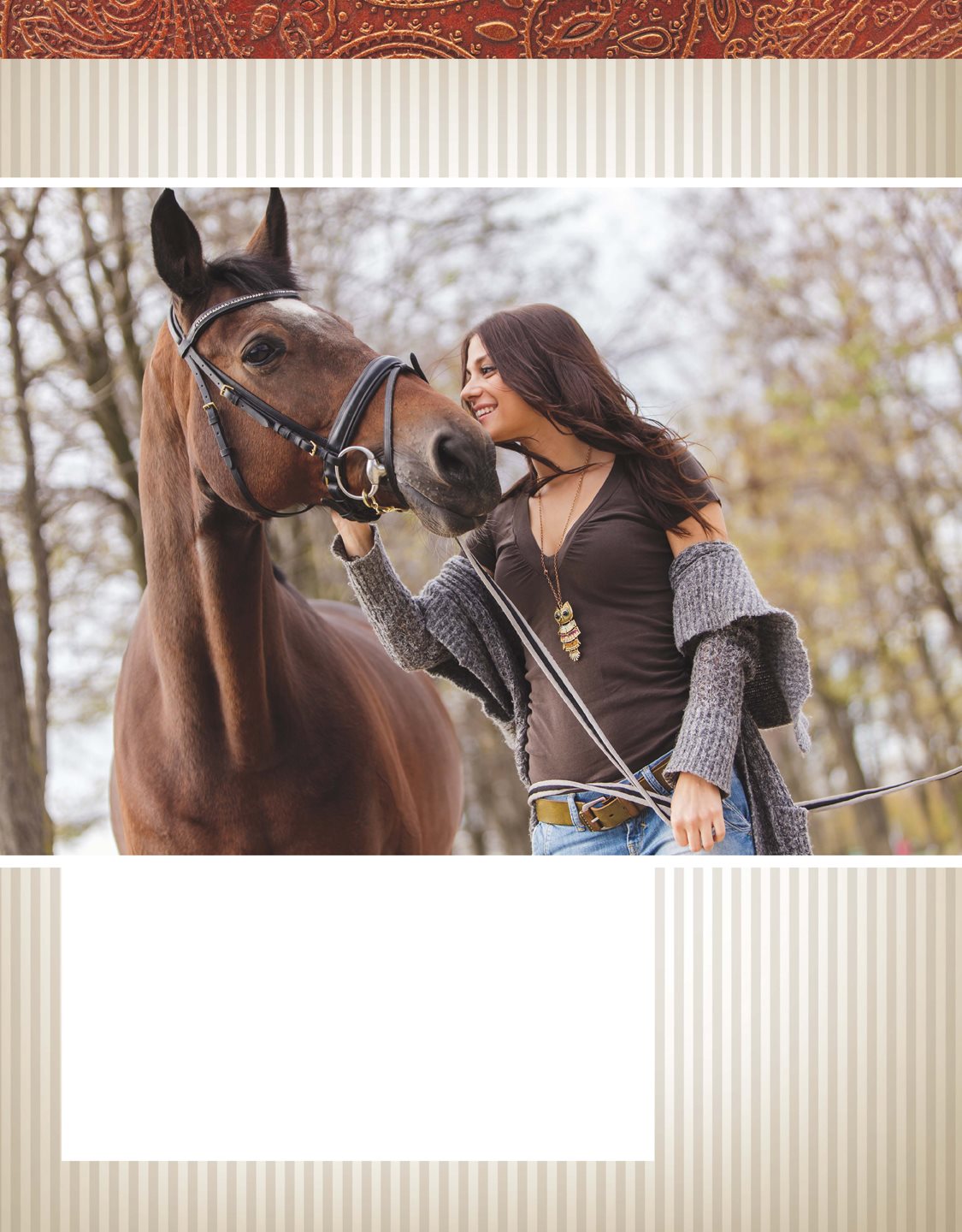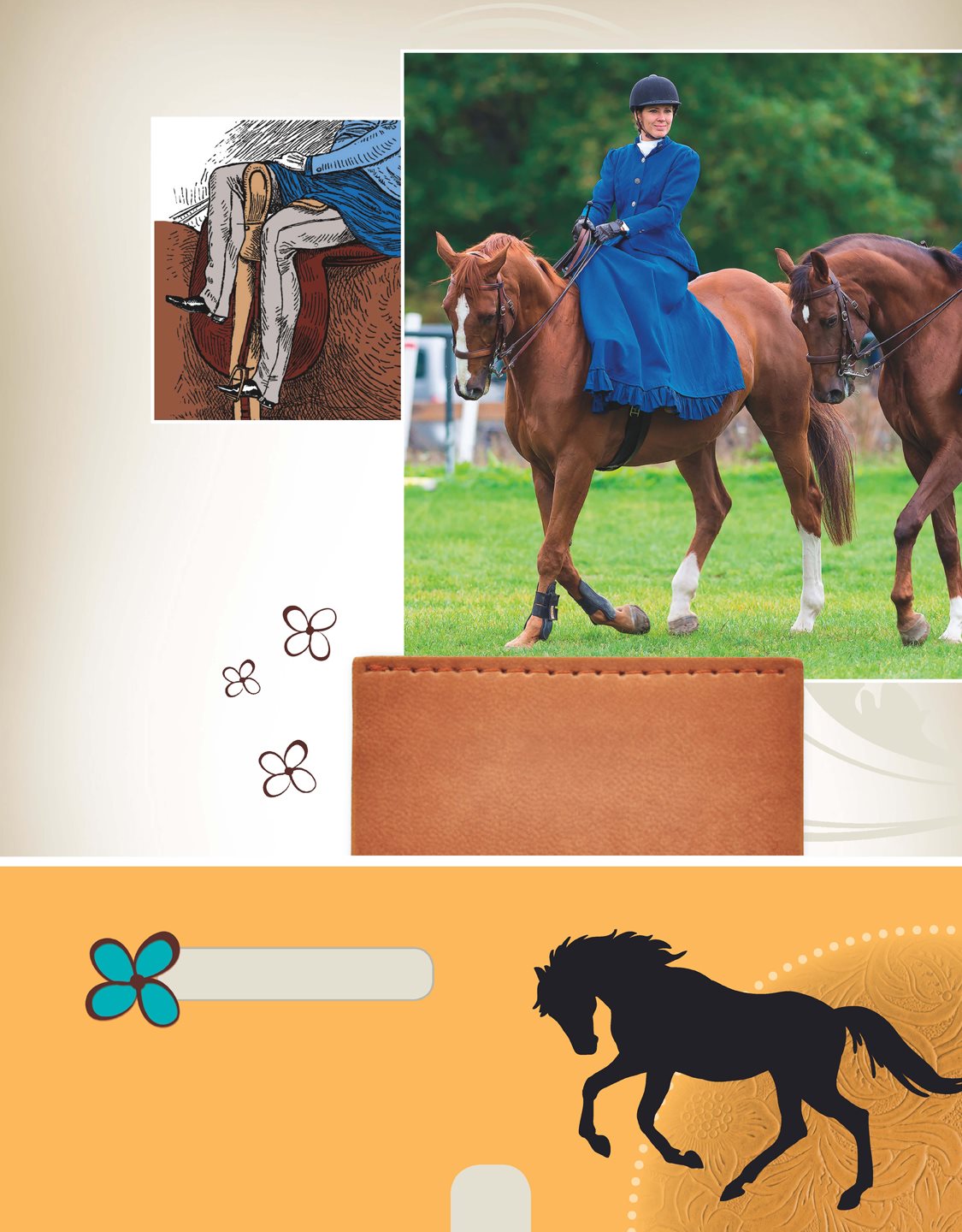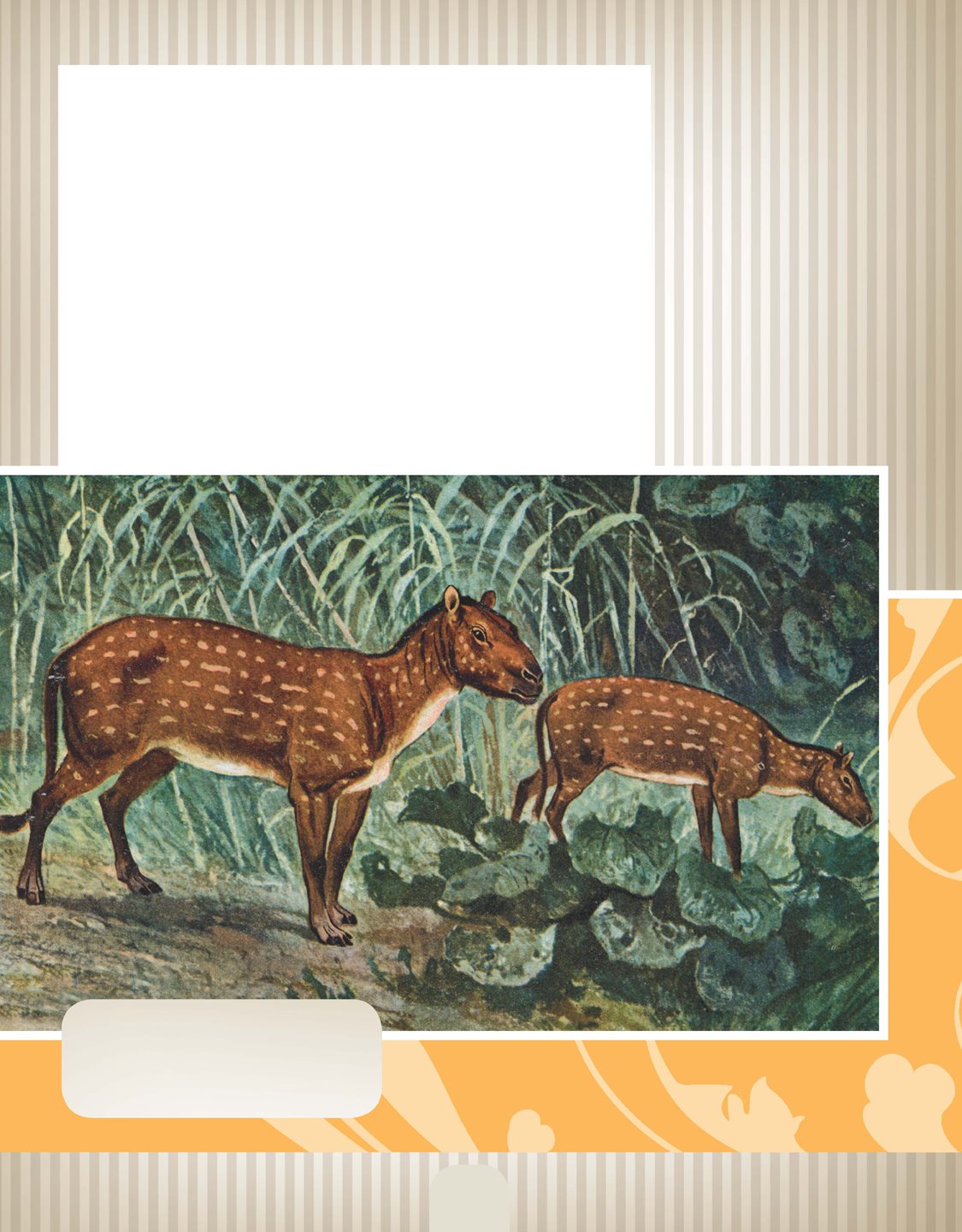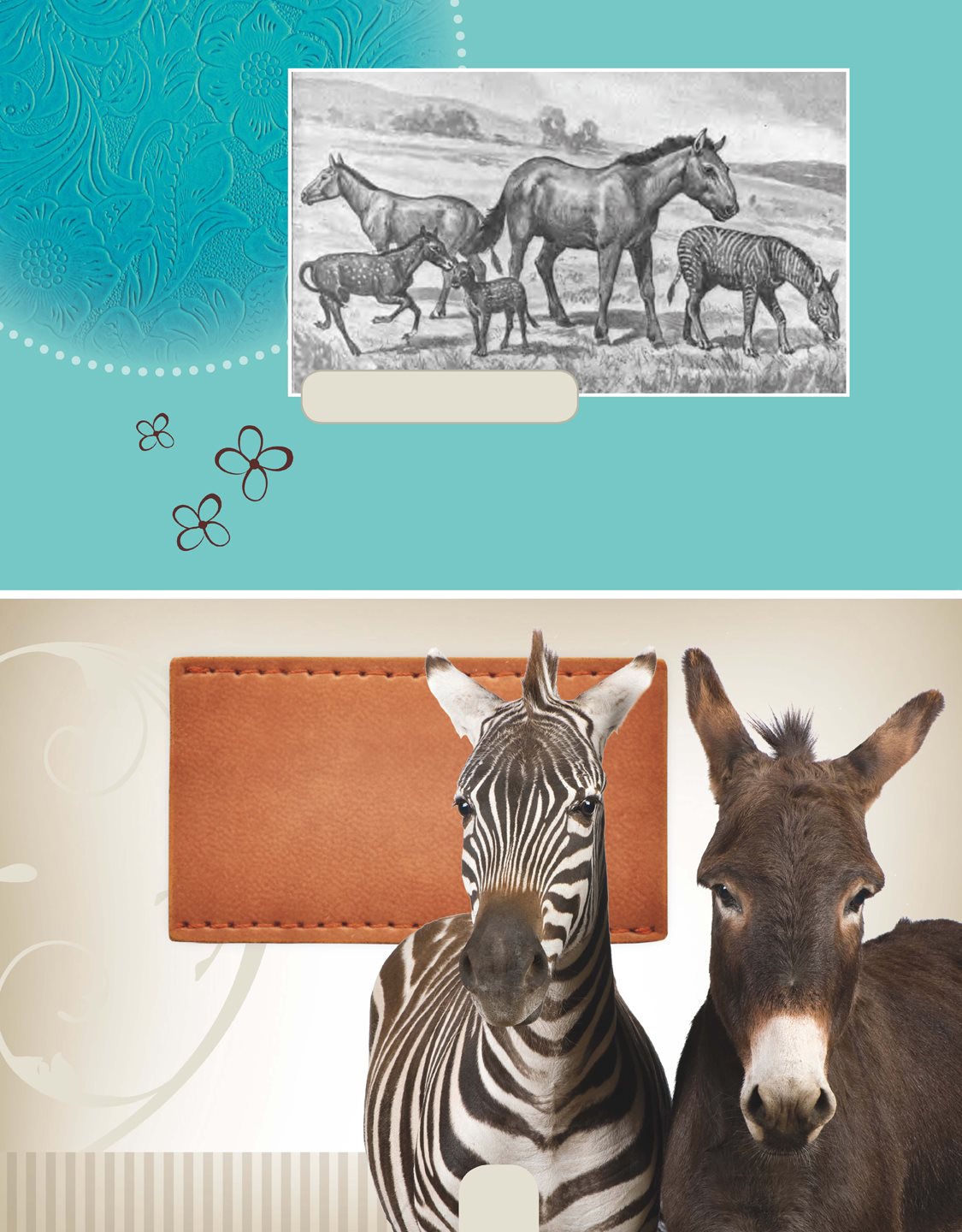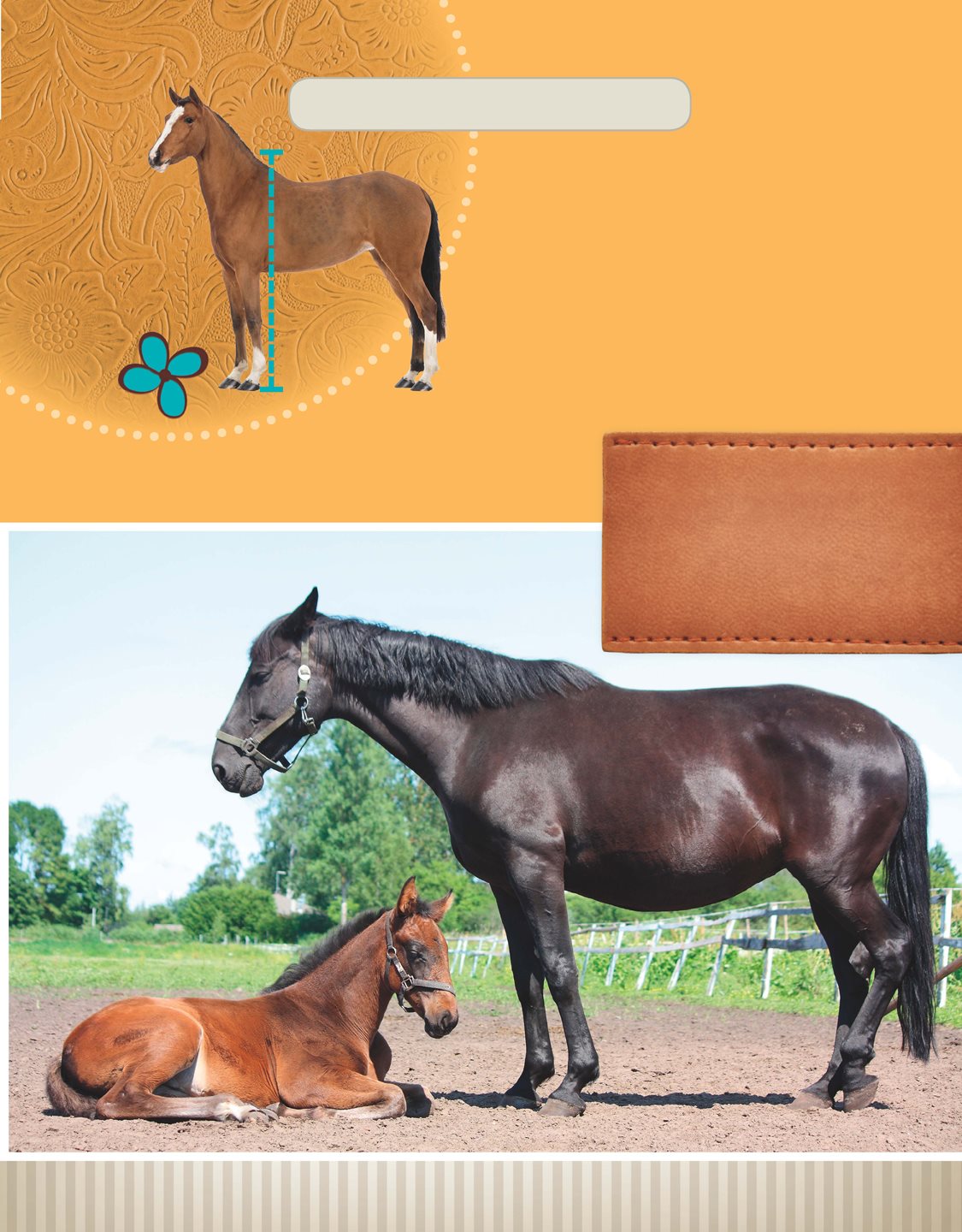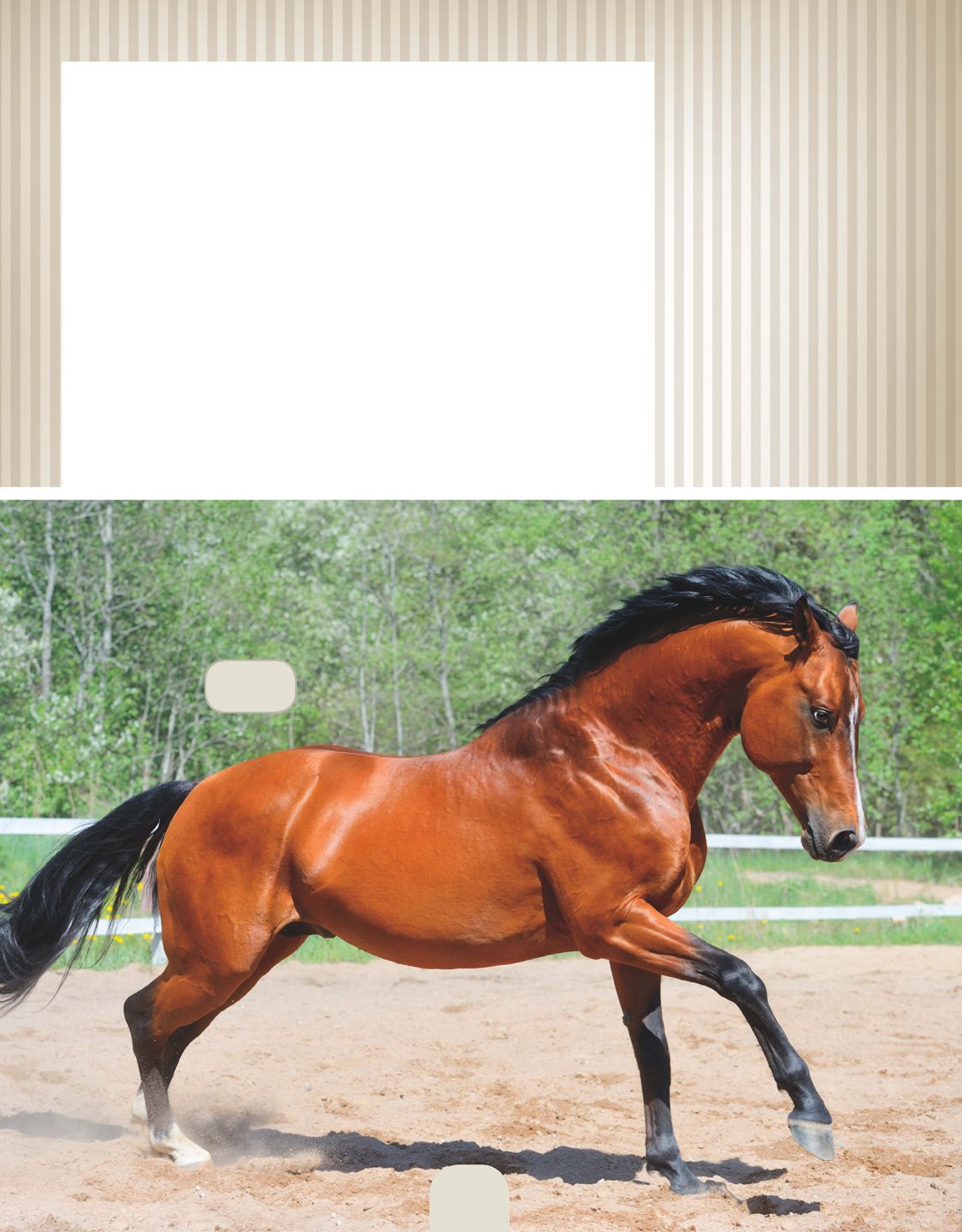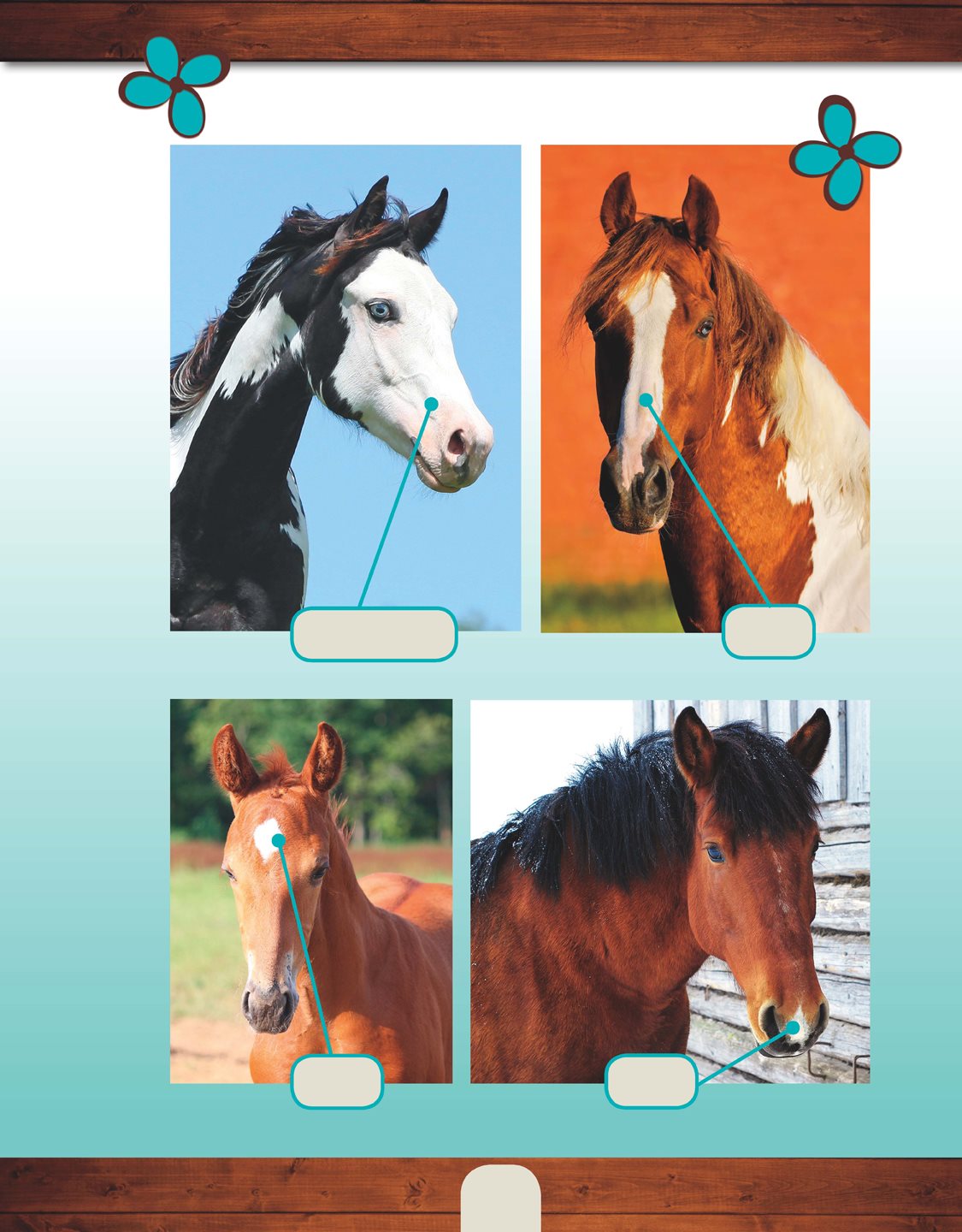CRAZY About Horses
All A b out H O R S E S
E verything A HORSE-CRAZY GIRL Needs to Know
by Molly Kolpin
Consultant: C. Michael Kerns, DVM Director of Veterinary Services The University of Findlay Findlay, Ohio
Snap Books are published by Capstone Press, 1710 Roe Crest Drive, North Mankato, Minnesota 56003 www.capstonepub.com
Copyright 2015 by Capstone Press, a Capstone imprint. All rights reserved. No part of this publication may be reproduced in whole or in part, or stored in a retrieval system, or transmitted in any form or by any means, electronic, mechanical, photocopying, recording, or otherwise, without written permission of the publisher. For information regarding permission, write to Capstone Press, 1710 Roe Crest Drive, North Mankato, Minnesota 56003.
Library of Congress Cataloging-in-Publication Data Kolpin, Molly
All about horses : everything a horse-crazy girl needs to know / by Molly Kolpin.
pages cm. (Snap books. Crazy about horses)
Summary: Text and photos introduce readers to general information about horses, including physical characteristics, historical origin, life cycle, body language, and horses in pop culture Provided by publisher.
Audience: Ages 814.
Audience: Grades 4 to 6.
Includes bibliographical references and index.
ISBN 978-1-4914-0710-3 (library binding)
ISBN 978-1-4914-0716-5 (eBook PDF)
ISBN 978-1-4966-6375-7 (ebook)
1. HorsesJuvenile literature. 2. HorsesBehaviorJuvenile literature. 3. HorsesLife cyclesJuvenile literature. I. Title. SF302.K65 2015
636.1dc23
2014002750
Editorial Credits
Michelle Hasselius, editor; Juliette Peters, designer; Deirdre Barton, media researcher, Laura Manthe, production specialist
Photo Credits
Capstone Studio: Karon Dubke: (l).
All design elements are credited to Shutterstock.
Glossary terms are bolded on first use in text.
Table of Contents
Horses Rule. Dogs Drool!
If a dog is mans best friend, then for girls this honor goes to the horse. With their large, intelligent eyes and curious, loyal natures, horses make excellent companions. Sure a horse cant sit on your lap. But horse-loving girls cant imagine anything better than exploring a trail or galloping through the countryside on horseback. Ride through life with a horse at your side (or under your saddle), and youre in for an incredible adventure.
A rider who sits has both legs on one side of the horse.
DID YOU KNOW?
For many centuries it was considered unladylike for girls to sit a horse. Instead they had to ride sidesaddle.
Safety First!
Never approach a horse without permission or adult supervision. Not all of these animals are gentle giants!
A Gallop through History
Sixty million years ago, horses began to develop in the southeastern area of North America. The horses earliest were little larger than rabbits. They ran on feet with toes and filled their bellies with leaves. They looked a bit like small foxes with long necks.
Slowly these animals spread to other continents and transformed into modern-day horses. Their toed feet turned into hooves, and they began to eat grass instead of leaves. Most noticeably their size grew until they became the big, powerful animals you know today.
The dawn horse was a prehistoric ancestor of modern horses. It roamed North America and Europe about 55 million years ago.
Growing Pains
The horses transformation over time was filled with twists and turns. It wasnt a tidy, straightforward process. Many strange-looking animals separate todays horse from its earliest ancestors.
DID YOU KNOW?
Horses are part of the scientific group called Equus. This group also includes zebras and donkeys.
Tip to Tail
Horses flowing manes and shiny coats have won over countless admirers. But their looks have more to do with practicality than prettiness. When living in the wild, horses needed to be able to outrun dangerous , such as wolves and mountain lions. They developed strong, muscular legs to help them sprint. Narrow faces and bodies reduce wind resistance and help horses maintain high speeds when galloping.
Not every feature on a horse was designed for speed, however. A horses long neck lets it graze for grass. Its swishy tail helps it swat at pesky flies. All these practical qualities result in a gorgeous animal!
Hand It to the Horse!
In the early days, people measured horses with their hands. Over time more precise ways to measure horses were developed, but the term hand stuck. One hand represents 4 inches (10 centimeters). Height is measured from a horses hooves to the top of its .
DID YOU KNOW?
Horses can lock their rear legs in place, which allows them to sleep while standing.
Coat Colors
When most girls think of horses, the colors black or brown come to mind. But horse coats actually include a wide variety of colors. Dapple gray, for example, is a gray coat with darker-colored rings. A gray coat with brown flecks is called fleabitten. Strawberry-roan is chestnut and white, while blue roan is black or brown with white. Bay refers to a horse with a solid-colored coat and a black mane, tail, and legs.
The list goes on and on. Add spots and patches to the mix, and its easy to see why horse coloring is a complicated topic!
bay
Common Facial Markings
bald face
blaze


